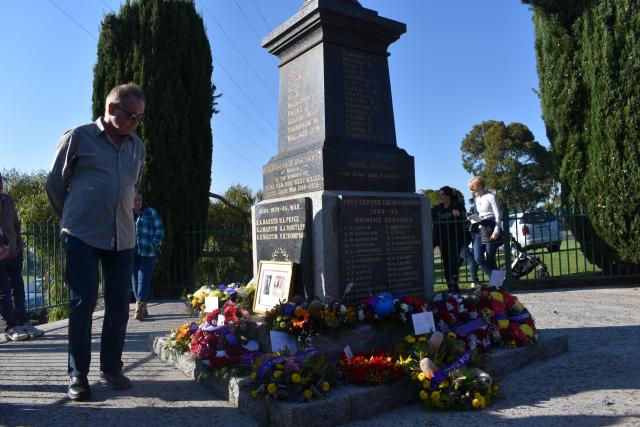By Callum Ludwig
The Wandin Cenotaph is set for an upgrade which will fill in the blanks in some of the township’s war history.
The Rotary Club of Wandin was successful in applying for funding from the Department of Veteran’s Affairs ‘Saluting Their Service’ Commemorative Grants Program, with $6000 provided to install a new stone plinth and seven more bronze plaques with the names of more service people from Wandin.
Rotarian Gavan McIntyre said it’s quite a big project that’s been in planning for the past 18 months.
“We decided to take up the mantle but the plaques themselves are about $6,000, and then we’ve got to do the stone plinth which has to be installed with a crane,” he said.
“The funding is $6000 from the (Department of) Veterans Affairs, $2000 from Rotary and $2000 from the Wandin Silvan Field Days committee who decided to put some money in, they have in the past helped with community projects and decided it was a worthy project.”
The project is anticipated to be unveiled during the annual Anzac Day mid-morning service held at the Wandin Cenotaph.
Mr McIntyre said he thinks the project is very important and will help people to continue to remember and preserve the service of these people.
“I think this generation, the young ones in particular, they’re all really on top of it and they’re interested in it and they’ll keep the whole thing rolling which is great because I think it had a bit of a flat spot years ago,” he said.
“You’d go to some memorial services and there wouldn’t be many people here, but now you go to one like our last Anzac Day one and there were 400 plus people there, which is pretty good for a little town like Wandin.”
The missing names and details set to be incorporated into the Cenotaph space were compiled by Anthony McAleer OAM and Chris Manders, who set about gathering information of the Wandin residents missing from the memorial, as well as more details about those featured, following the centenary of World War One.
Mr McAleer said the tradition 100 years ago when a lot of memorials were created was to only include the surname and the initial of the person.
Now 100 years ago everybody knew who those people on the memorial were, but 100 years later it’s hard to get any details and it’s harder to connect with these people on a personal level,” he said.
“What we’ve done now is include their full name, their rank, the unit they served with, the years that they served and whether they served in the Navy or as part of the nursing service or with the AIF (Australian Imperial Force) or a particular branch of the AIF like the artillery and for those who died while on active service, it’s got things like the date that they died and the cemetery where they’re buried.”
A similar updating project was carried out at the Montrose War Memorial, while the newer Seville War Memorial was also designed to include more detail than memorials historically would have.
Mr McAleer said he thinks people gain a better understanding of the local service and sacrifice with the added detail.
“We’ve been lucky that a lot of further information has been provided by things like the National Archives and such so it was certainly easier to track down and there was a variety of reasons these names could have been left off, like for example, they were living in Wandinthen they moved to New South Wales and enlisted there,” he said.
“It’s not surprising that so many were missed but I think it’s good for us all these generations later to recognise and pay tribute to them by giving more detail and certainly personalising a lot more and allowing people to make that connection with the names of those who served and sacrificed.”







